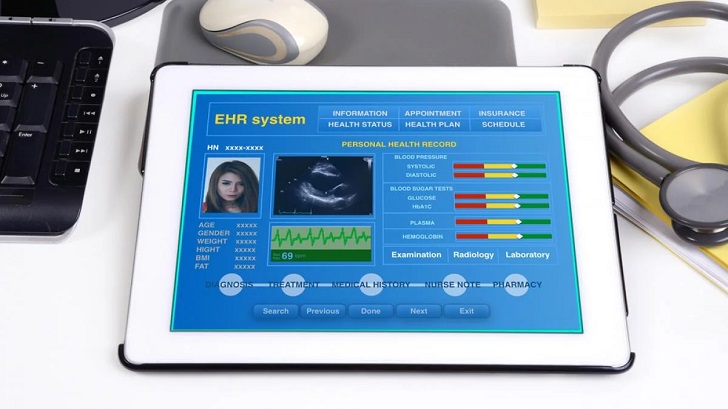
Onsite Health Clinics: Key Factors That Contribute to Their Success

Onsite health clinics are a cost-effective way to improve employee health and wellness, and they often help companies attract and keep top-quality employees. These clinics provide convenient and accessible healthcare services within the workplace, benefiting both employees and employers. However, the success of an onsite health clinic relies on several key factors.
Clear Goals and Objectives
Before launching an onsite health clinic, it’s essential to have clear goals and objectives in mind. What do you hope to achieve by offering this service? Are you looking to improve employee health, reduce healthcare costs, or both? A clear understanding of your goals and objectives will help you design a program that meets the needs of your employees and your organization.

iStock/ Getty Images | The art of medicine consists of amusing the patient while nature cures the disease
Employee Engagement
Employee engagement is critical to the success of any onsite health clinic. Employees who are actively engaged in their health and wellness are more likely to take advantage of the services offered by the clinic. To encourage engagement, it’s essential to communicate the benefits of the clinic to employees and involve them in the planning and design process.
Comprehensive Services
Successful onsite health clinics offer comprehensive services, from preventive care to chronic disease management. Services may include physical exams, screenings, immunizations, health coaching, and chronic disease management. By offering a wide range of services, onsite health clinics can address the diverse health needs of employees.
Convenient and Accessible Location
The location of the onsite health clinic is critical to its success. The clinic should be conveniently located within the workplace, ideally in a central location easily accessible to all employees. This can help reduce access barriers and encourage employees to take advantage of the services offered.

Citi/ Pinterest | 83% of large companies offer wellness programs
Skilled Providers
The quality of care provided by the onsite health clinic is directly related to the skills and expertise of the providers. It’s important to select licensed, experienced, and knowledgeable providers in their field. Providers should also have excellent communication skills and be able to work collaboratively with other healthcare professionals.
Electronic Health Records
Electronic health records (EHRs) are essential for efficiently operating an onsite health clinic. EHRs allow providers to access and update patient information quickly and easily, reducing the risk of errors and improving the quality of care. EHRs also make tracking and analyzing patient data easier, which can help identify trends and improvement opportunities.
Data Collection and Analysis
Data collection and analysis are critical components of a successful onsite health clinic. By collecting and analyzing data on patient outcomes, utilization rates, and other metrics, organizations can identify areas for improvement and make data-driven decisions about the design and delivery of services.

Shutterstock/ Getty Images | Good quality records underpin safe, effective, compassionate, high-quality care
Integration With Other Healthcare Services
Successful onsite health clinics are integrated with other healthcare services, such as primary care providers and specialist care. This integration can help to ensure that employees receive the best possible care and that their healthcare needs are met holistically.
Evaluation and Continuous Improvement
Finally, it’s essential to evaluate the success of the onsite health clinic on an ongoing basis and make continuous improvements. Regular evaluation can help identify improvement areas and make data-driven decisions about the design and delivery of services. By continuously improving the program, organizations can ensure that they are meeting the changing needs of their employees and providing the best possible care.
More in Medicare
-
`
What Major Medicare Changes You Should Expect in 2025?
Medicare Advantage Plans with Part D May Raise Costs Starting in 2025, some Medicare Advantage Plans that include Part D prescription...
October 16, 2024 -
`
Top 5 Best Places for Skiing Around the World
When it comes to adventure and winter sports, finding the best places for skiing can take your vacation to the next...
October 10, 2024 -
`
A-List Celebrities at Milan Fashion Week Spring 2025
The excitement of Milan Fashion Week Spring 2025 is palpable as the fashion elite gather to celebrate creativity and style in...
October 1, 2024 -
`
Polish Government to Rise Minimum Wage By 8% in 2025
The Polish government’s minimum wage is set to increase by 8% in 2025. While workers and unions welcome the move, many...
September 25, 2024 -
`
Kidney Infection: Causes, Symptoms, Prevention & Treatment
Kidney infections – AKA pyelonephritis – are serious health conditions that can lead to severe discomfort. But does kidney infection cause...
September 19, 2024 -
`
What to Do in Ubud, Bali – Top Attractions & Activities
Ubud, the cultural heart of Bali, offers an array of activities that capture the essence of this enchanting island. From exploring...
September 11, 2024 -
`
Important Aspects of Your Health You Should Pay Attention To
When thinking about your health, it’s crucial to consider the key factors that create a solid foundation for your well-being. These...
September 6, 2024 -
`
6 Creative Birthday Party Ideas For Adults
Gone are the days when birthdays were just about cakes and candles. Now, it is all about creating memorable experiences that...
August 28, 2024 -
`
Are Chanel and Johnny leaving Days of Our Lives? Here Are the Facts
Fans of Days of Our Lives have been on the edge of their seats, wondering if Chanel and Johnny are leaving...
August 20, 2024















You must be logged in to post a comment Login